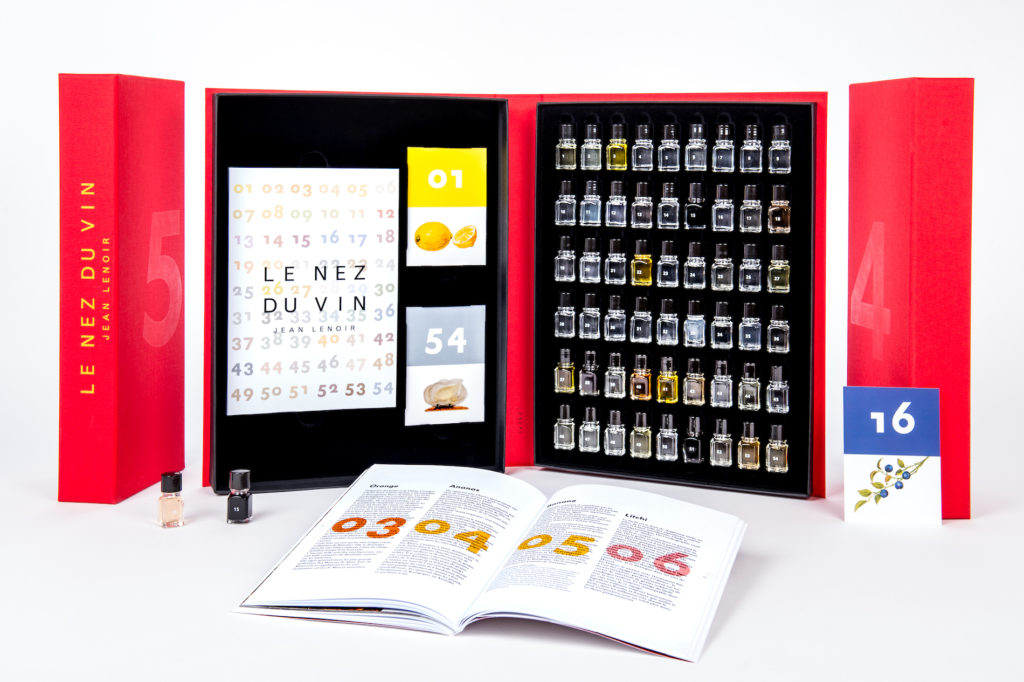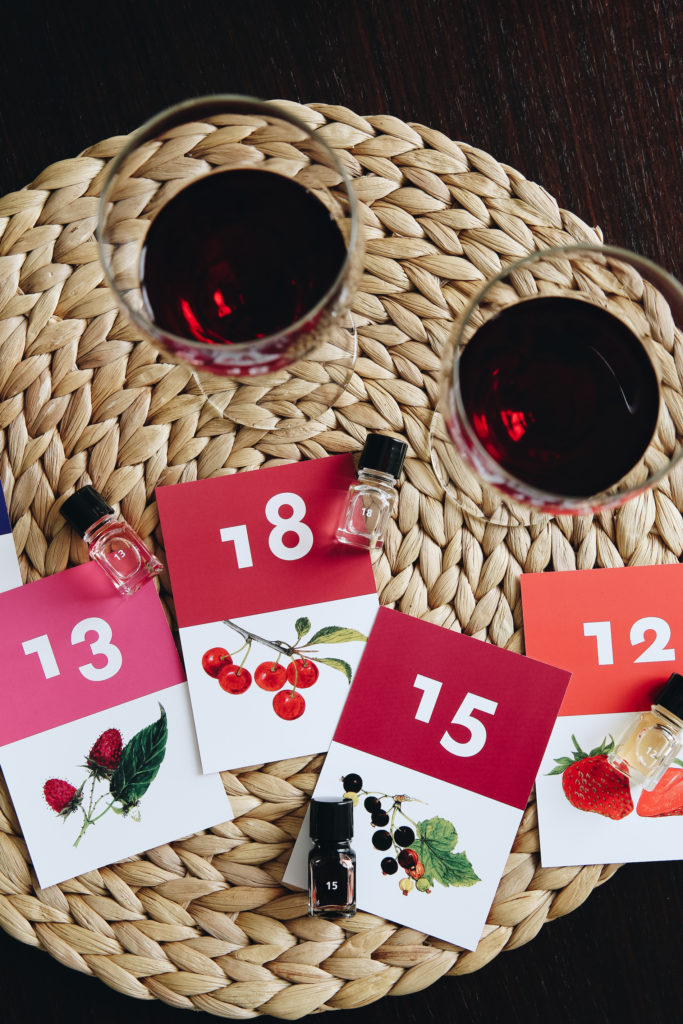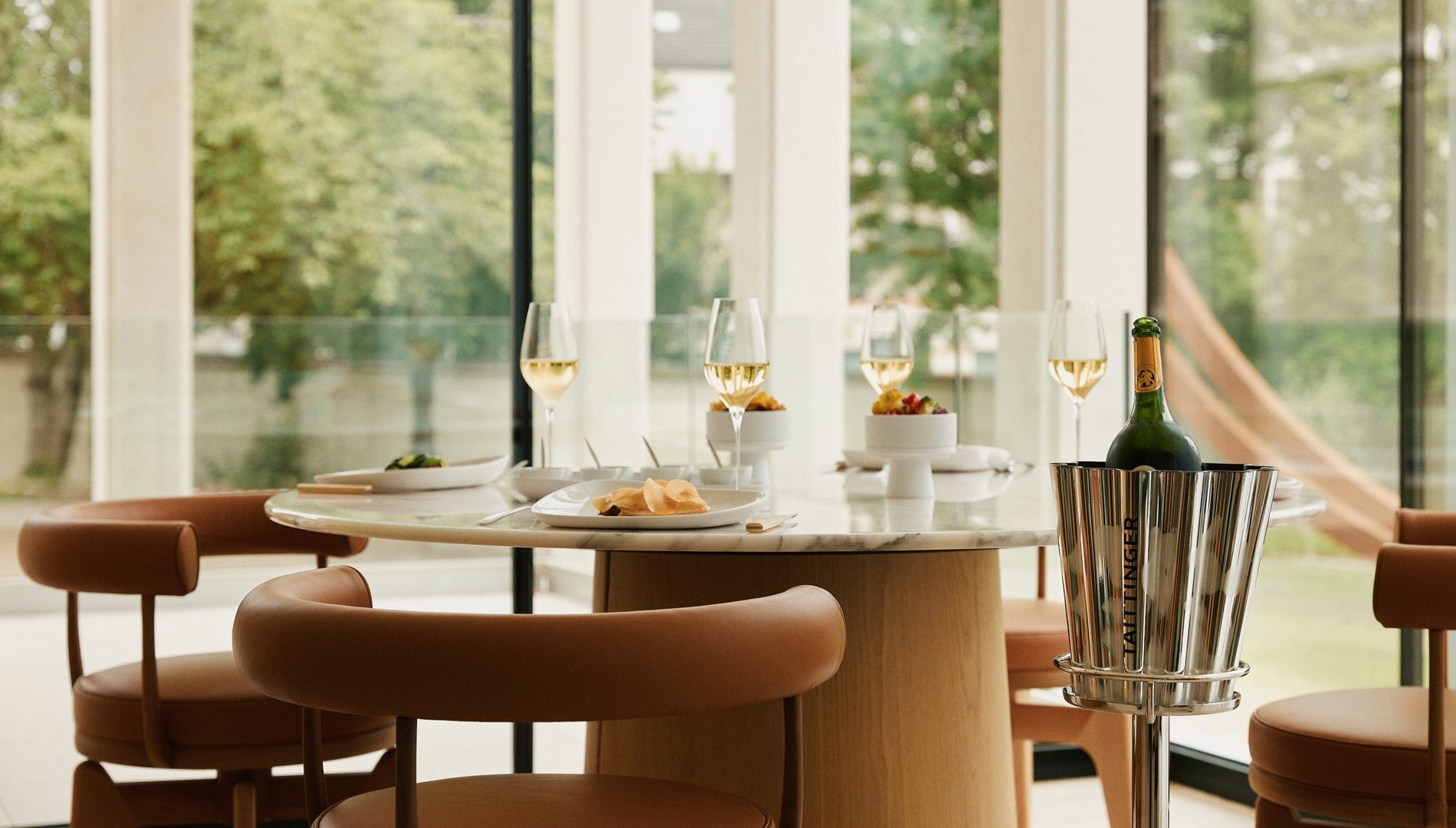An extraordinary character, charismatic, a lover of wine and women, recently deceased Jean Lenoir leaves behind him “Le Nez du Vin”, which allowed tasters to hone their senses and comprehend wine through the olfactory system. This object-book, which has played an important role in the history of oenology for all, is at the heart of a real French success story. Continued by his family, his great work lives on.
Some inventions start from a simple, altruistic idea and go on, unexpectedly, to become cult objects sold around the world in hundreds of thousands of copies. Take “Le Nez du Vin”. The box set has known success for over 40 years that its creator, Jean Lenoir, could not even have dreamed of. Proof that not only did it play to the mood of the time, but also to a genuine, lasting and timeless need: to know and recognise the aromas that characterise wines.
The originality of the concept was to have combined theory and practice by providing samples to smell and information to learn, all presented in an elegant book-style case. The stroke of genius was turning it into a universal tasting guide, both diligently informed and accessible to all, which consequently multiplied its possible uses and users.
It was at the end of the 70s, when Jean Lenoir was deputy director of the ‘MJC’ community youth club and arts centre in Chalon-sur-Saône, that Le Nez du Vin would take shape.

From social matters to wine
The man from Burgundy, son of a farmer, could have taken over the family farm or joined the clergy as his mother wanted. Instead, he qualified to join the Postal Service, without following the management’s straight line for long. Enter an 18-month interlude in Algeria with the paratroopers. Upon his return, he was appointed to manage the recently opened ‘MJC’ community youth club and arts centre in Dole, then the one in Besançon, and finally Chalon-sur-Saône, where he set up a circuit of presentations with visual artists, including Daniel Spoerri, the initiator of the Eat Art movement. “He would be an influencing factor in the process of creating Le Nez du Vin”, says Viva Lenoir, Jean’s daughter. “In his snapshots of meals – dinner leftovers poured under resin – there was an element of transcendence of the artistic tool. That’s what led my father to imagine that you could create a book that is not just a book, that could be perceived in various forms.”
At the time, Jean Lenoir also organised theme nights around food and wine, something he had long been passionate about. At the age of 40, encouraged by the audience at his presentations, he became a professional in oenology at the Beaune Institute, directed by Max Léglise, the founding father of sensory analysis in wine tasting. “Wine was thought of as reserved for the elite, with a specific vocabulary. But no: it’s all about the aroma. This sensory approach attracted my father with its angle of cultural decentralisation and accessibility, whilst retaining the nobility of the product.”
Thanks to Oliver Boussan, founder of l’Occitane, who took him to the raw material suppliers for the Grasse perfumery, he collected 120 bottles of aromas in a briefcase, which he carried with him all over France and beyond as part of his activities. And because he couldn’t be everywhere at once, he had the idea to create a handy, educational tool containing aromas and explanatory notes, illustrated by Colette, his second wife. On the promise to purchase a thousand of his contacts, he launched the first print run of Le Nez du Vin in 1981. A year later, to ensure the development of his project, he founded Jean Lenoir Editions, which in the 90s, with the support of his third wife Sibylle, would become a flourishing family business.
54 aromas
The product did not penetrate all markets at the same speed, however: sommeliers embraced the novelty, amateurs turned it into a parlour game, oenologists were more reserved, perhaps a little covetous of wisdom they were afraid to share. “Which is understandable,” admits Viva Lenoir, “because popularisation has its limits.”
54 bottles now make up the large version of Le Nez du Vin. They exhale the most common fruity, floral, vegetal, animal and toasted notes, those that distinguish a vineyard, a terroir, a grape variety, a cuvee, and apply to all wines, including champagne. “The aromatic range of champagne is sadly unknown because too often we stop at the bubble, the trigeminal sensations. Whilst double fermentation is one of the most wonderful things that exists in terms of aromatic influence.”
The first version of Le Nez du Vin in 1981 contained 54 samples too, except that these included wine’s olfactory defects, now kept separately in a special box, intended more for professionals because, frankly, who wants to sniff the smell of glue, horse, rotten egg, cauliflower or mouldy-earth that can spoil certain (rare) bottles?
Although the aromas – natural or synthetic depending on the case – are still the same 40 years later, the formulas have evolved to get closer to an ideal constantly pursued by Jean Lenoir and his successors. Bearing in mind that “we are not selling scents. Our job is to explain why we find such a scent in such a wine.” Viva Lenoir recaps the basics: “We don’t learn a scent by heart. What we learn, is the path to find it. That is to say, the finesse of the thing, the essence of what Proust could describe with the madeleine. How can you name something without being able to recognise it? It is the triggering of the awareness in your aromatic perception that will allow you to be a better taster.”
Sold in around a hundred countries and translated into 11 languages, Le Nez du Vin is available in boxes by wine colour and also has versions for coffee and whisky.







